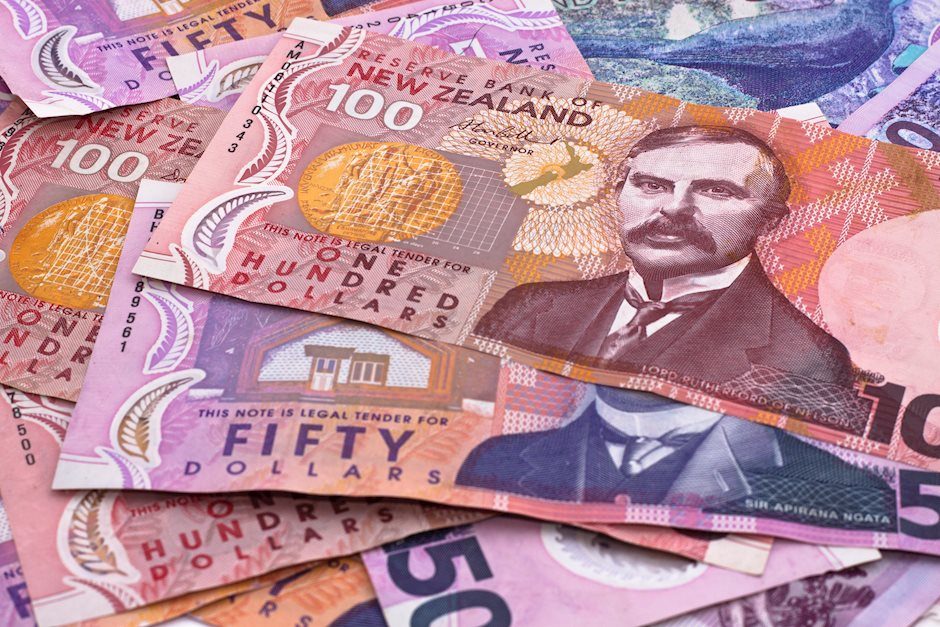NZD/USD remains below 0.6200, receives downward pressure from Chinese economic concerns
- NZD/USD receives downward pressure from the deteriorating economic outlook in its key trading partner, China.
- Economists at Goldman Sachs and Citi have downgraded their GDP growth forecasts for China to 4.7% in 2024.
- The US Dollar struggles due to increasing expectations of a 50 basis points Fed interest rate cut on Wednesday.

NZD/USD retraces its recent gains from the previous session, trading around 0.6190 during the Asian hours on Tuesday. The antipodean New Zealand Dollar (NZD) faces challenges due to growing concerns over the economic health of its key trading partner, China. Analysts point out that the latest round of weak economic data indicates serious challenges for the world's second-largest economy.
Economists at Goldman Sachs and Citi have reduced their 2024 Gross domestic Product (GDP) growth forecasts for China to 4.7%, falling short of Beijing's target of around 5.0%. SocGen describes the situation as a "downward spiral," while Barclays calls it "from bad to worse" and a "vicious cycle." Morgan Stanley also cautions that "things could get worse before they get better," according to a Reuters report.
Traders are expected to closely monitor the People's Bank of China's (PBoC) Monetary Policy Committee (MPC) monthly review of its key lending rates on Friday, following disappointing industrial output growth and retail sales figures for August. This review could provide further insight into China's economic trajectory and its potential impact on global markets.
New Zealand's Gross Domestic Product (GDP) for Q2 is set to be released on Thursday, with markets anticipating a 0.4% quarter-on-quarter contraction following a 0.2% expansion in Q1. The decline is likely driven by continued weakness in consumer spending, raising concerns about the overall health of the economy.
The US Dollar (USD) is under pressure as expectations grow that the Federal Open Market Committee (FOMC) may opt for a significant 50 basis point rate cut on Wednesday. According to the CME FedWatch Tool, markets are pricing in a 38.0% chance of a 25 basis point Federal Reserve interest rate cut at the September meeting, while the probability of a 50 basis point cut has surged to 62.0%, up from 50.0% just a day earlier. This shift reflects heightened anticipation of more aggressive monetary easing.
New Zealand Dollar FAQs
The New Zealand Dollar (NZD), also known as the Kiwi, is a well-known traded currency among investors. Its value is broadly determined by the health of the New Zealand economy and the country’s central bank policy. Still, there are some unique particularities that also can make NZD move. The performance of the Chinese economy tends to move the Kiwi because China is New Zealand’s biggest trading partner. Bad news for the Chinese economy likely means less New Zealand exports to the country, hitting the economy and thus its currency. Another factor moving NZD is dairy prices as the dairy industry is New Zealand’s main export. High dairy prices boost export income, contributing positively to the economy and thus to the NZD.
The Reserve Bank of New Zealand (RBNZ) aims to achieve and maintain an inflation rate between 1% and 3% over the medium term, with a focus to keep it near the 2% mid-point. To this end, the bank sets an appropriate level of interest rates. When inflation is too high, the RBNZ will increase interest rates to cool the economy, but the move will also make bond yields higher, increasing investors’ appeal to invest in the country and thus boosting NZD. On the contrary, lower interest rates tend to weaken NZD. The so-called rate differential, or how rates in New Zealand are or are expected to be compared to the ones set by the US Federal Reserve, can also play a key role in moving the NZD/USD pair.
Macroeconomic data releases in New Zealand are key to assess the state of the economy and can impact the New Zealand Dollar’s (NZD) valuation. A strong economy, based on high economic growth, low unemployment and high confidence is good for NZD. High economic growth attracts foreign investment and may encourage the Reserve Bank of New Zealand to increase interest rates, if this economic strength comes together with elevated inflation. Conversely, if economic data is weak, NZD is likely to depreciate.
The New Zealand Dollar (NZD) tends to strengthen during risk-on periods, or when investors perceive that broader market risks are low and are optimistic about growth. This tends to lead to a more favorable outlook for commodities and so-called ‘commodity currencies’ such as the Kiwi. Conversely, NZD tends to weaken at times of market turbulence or economic uncertainty as investors tend to sell higher-risk assets and flee to the more-stable safe havens.
Author

Akhtar Faruqui
FXStreet
Akhtar Faruqui is a Forex Analyst based in New Delhi, India. With a keen eye for market trends and a passion for dissecting complex financial dynamics, he is dedicated to delivering accurate and insightful Forex news and analysis.
















